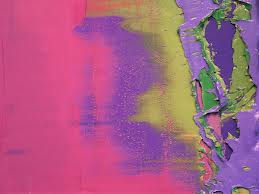I am taking an on-line course in dyeing with Elizabeth
Barton, and our first lesson is on value: darks, lights and everything in
between. We were asked to choose ten pieces of art that are mostly black, white and grey, and to analyze them in terms of structure. Where is the focal point?
How is it created? How are the darks and lights organized to make an effective
composition? Here are my choices:

1. "The Boulevard of Montmartre on a Winter Morning", Camille Pissarro, 1897
I love the way the rhythmic strokes of dark paint are used to depict the windows, carriages and trees lined along the boulevard, almost echoing the "clop, clop, clop" of the horses on the pavement. Large, dark masses on either side guide the viewer's eye down the lighter pavement of the road, towards a pale sky. Not strictly without colour, but a very minimal palette.
2. "Self-Portrait", Camille Pissarro, 1903
A very simple organization of two dark shapes that frame his face, set against a soft background much like his many paintings of the city.
3. "Guernica", Pablo Picasso, 1937
It has no single focal point, and the eye jumps all over the
canvas. Its visual disorganization conveys the chaos of war. A roughly
triangular mountain of lighter values in the center stops the composition from
spinning completely out of control.
I was lucky enough to see the current exhibition at the
Guggenheim, Picasso: Black and White, which runs until January 23 and features
about 100 of his works. If you go to the website

"Claiming that color weakens, Pablo Picasso purged it
from his work in order to highlight the formal structure and autonomy of form
inherent in his art. His repeated minimal palette correlates to his obsessive
interest in line and form, drawing, and monochromatic and tonal values, while
developing a complex language of pictorial and sculptural signs."
4. "Woman Ironing", Pablo Picasso, 1904
shows how areas of greater contrast are organized with vertical lines to convey the pressure the woman is applying as she irons.
5. "Woman in White", Pablo Picasso, 1923
A much softer portrait, it was also featured in the show. The focal point is supported by using the greatest contrast
of values, and the darkest values, around the subject's face. The softness of
her rounded body is reinforced by the use of muted greys.
6. "Rainy Day Boston", Childe Hassam, 1885
The zigzag of dark shapes across the horizontal conveys the reflections of figures and buildings on wet pavement and organizes the composition.
7. "Across the Common on a Winter Evening", Childe
Hassam, 1885-86
The canvas is bisected horizontally, with intrusions of
black shapes on the lower, white foreground and of light shapes on the upper,
dark background.

8. "Arrangement of Grey and Black No.1"
(Whistler's Mother), James McNeill Whistler, 1871
Interesting that the area of highest contrast is a framed
print on the wall, and not the subject itself. Other areas of high contrast are
the subject's hands on her lap, and the lace around her collar against the
black dress. The pattern on the curtains adds subtle texture, and the modulated
warm grey background is very beautiful.

9. As a Quebecer, I have to include the paintings of Jean-Paul Lemieux. If you do a Google search for his images you will find many portraits of alienated figures set in the landscape, evoking memory and dream. He was influenced by French-Canadian folk art. One such example is "Evening Visitor", 1956.
10.
Louise Lemieux Berubé is a Quebec artist who uses
digital technology to make jacquard tapestries based on her photographs. At left is one of her works, "Un orteil dans le vide no2", 2011.
Because of the nature of jacquard weaving, she can produce many
shades of grey by using only black and white thread, and changing the stitch on
the loom. The backs of the pieces look like the negatives of the fronts.
Sorry, but I just have to add one more, Gustave Caillebotte's "Rooftops in the Snow", 1878. Isn't it lovely? Strongest value contrasts in foreground and middle ground, softer contrasts in background, fading to a grey sky. Love those spikey chimneys and mansard roofs.
Now to use some of these insights in my own work. I've started work on a Quebec City perspective with architecture in a similar style to this.















_-1878.jpeg)















